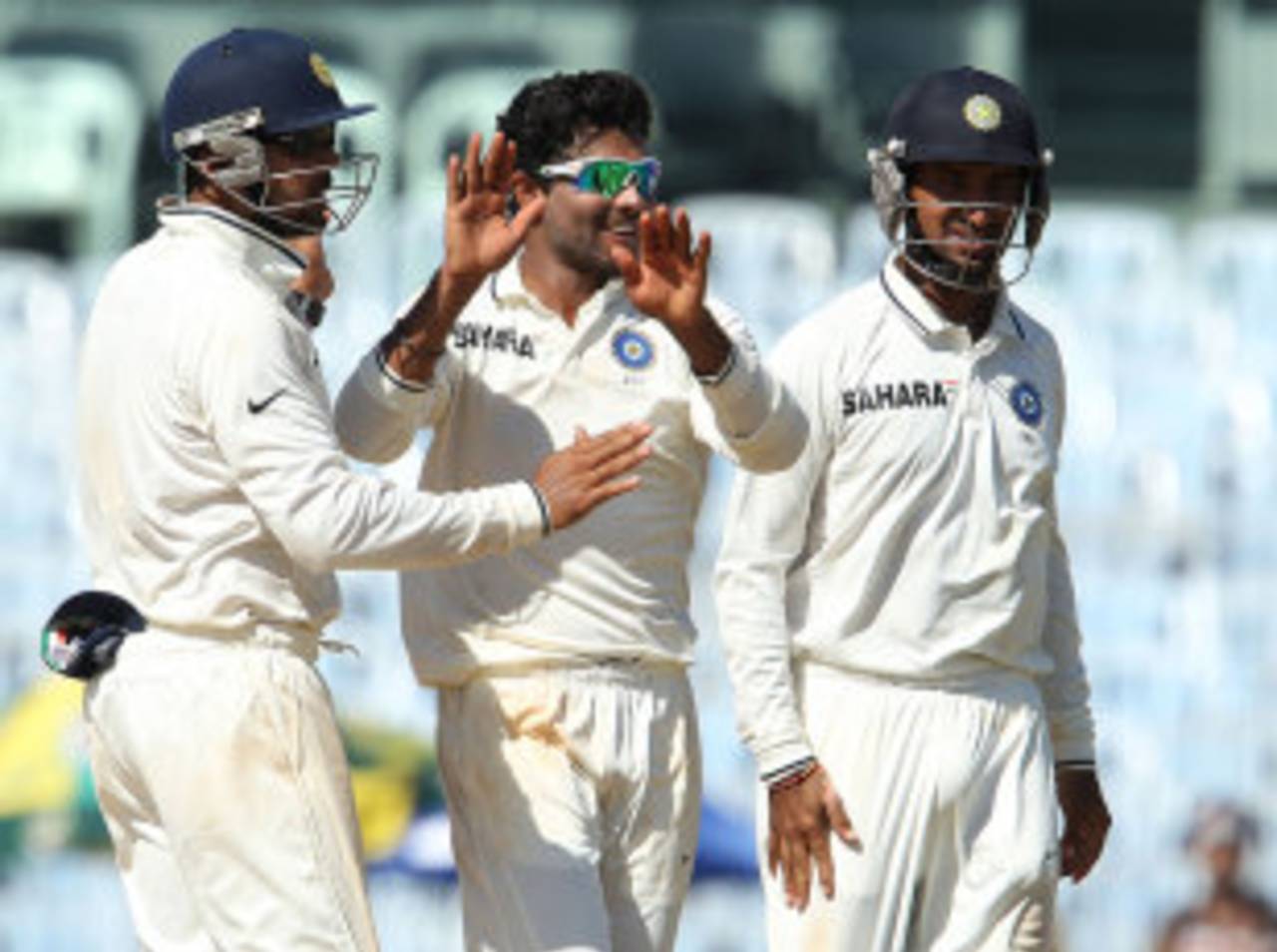At the tail end of his interaction with the media at the end of the third day, Virat Kohli was asked about whether India would fancy batting a second time on Chepauk's flaky, wafer-biscuit wicket. "Definitely not," he said to much laughter around him.
Thanks to Moises Henriques and Nathan Lyon, though not in the manner Australia hoped on Sunday, India will definitely have to bat again in this Test. They will go back into their dressing room thanking their captain for a double-century of monumental speed, size and importance which gave them a lead of 192, against Australia. Anything less now appears a trifle.
Two Indian spinners,
Harbhajan Singh and
Ravindra Jadeja, were able to put in a far more commanding performance than they did in the first innings. There would logically be two factors at work here - the nature of the wicket and the inexperience of their opposition. More than assistance, the surface offered active intervention. The Chepauk wicket now resembles those dirt lanes that wind between fields in the Indian countryside. With every passing day, its pristine, clean core has shrunk into a smaller and smaller oval shape. With its turn, bite, zip and bounce of varying predictability, what the Australian batsmen found in the second innings was a surface so alien to them, that it would be like going out to bat on the moon.
Jadeja, whose tight line brought him 2 for 68 in 26 overs, shrugged. "I think this wicket is fine for Test cricket," he told the media in Hindi. "In Indian conditions, this is the kind of wicket there is. You can only win Test matches if you take 20 wickets, don't you? There's not much damage on the centre of the wicket for the fast bowlers. Whatever is happening is from their footmarks."
India's two seam bowlers mostly have had to play fielders and tailenders. In the Australian second innings, Ishant was brought on as late as the 76th over. A joke that went around in ESPNcricinfo's ball-by-ball commentary that he was merely turning up to use up the overs before the second new ball, turned out to be true. The first three overs with the new ball were sent down by R Ashwin and Jadeja.
Jadeja is only into his second Test and he remembers
Nagpur where he made his Test debut against England late last year. The pitch was slow and offered little assistance. Chepauk to him, trying to find his feet in the Test team, must be a candy store. With much going on by way of unpredictability, the spinners floated the ball in and found a smooth groove.
Jadeja's line stuck to off and off and middle stump, he tried to prevent himself from slipping down leg against the right-handers and used the familiar repetitiveness of his action to slip in variations using a stump-to-stump line. Harbhajan Singh, who ended the day with 2 for 55 from his 27 overs, found himself on familiar turf, bowling fuller and he said later on television, with more energy. "I wasn't following through from my action in the first innings, I was bowling and standing, not pushing myself. We bowled well as a unit today."
Apart from individual effort and attention, bowlers snap into efficient collective discipline when the wicket is helpful and the opposition flounders. India were well served all around - Phillip Hughes will have nightmares about the Jadeja biter that shot up into his face and nipped his glove. Michael Clarke fell when one kept low from Ashwin and shot through to hit him on the pad. Matthew Wade tried to sweep a straight ball from Harbhajan after 23 minutes of survival, Peter Siddle did the same against Jadeja.
The total either player wanted India to chase on Tuesday did not extend beyond 75. India-Australia Tests in Chennai in recent times have had a habit of being, by and large, dramas of excruciating tension. The 2001 series went down to the final session of the
final day. In 2004, Australia came to
Chennai 1-0 up in the series. India were set 229 to win and the boundary off the last ball of the fourth day cannot be forgotten. Virender Sehwag, that most sociable of competitors, bashed Glenn McGrath down the ground for four. He tucked his bat under his arm and walked off stone-faced, without a sideways glance at anyone. India needed 210 more to equal the series. Except it rained on day five and washed out play entirely.
That is not about to happen because that was October and we are well into February. The worst the weather report says for day five is 'partly cloudy sky' with the chance of rain being 'nil.'
